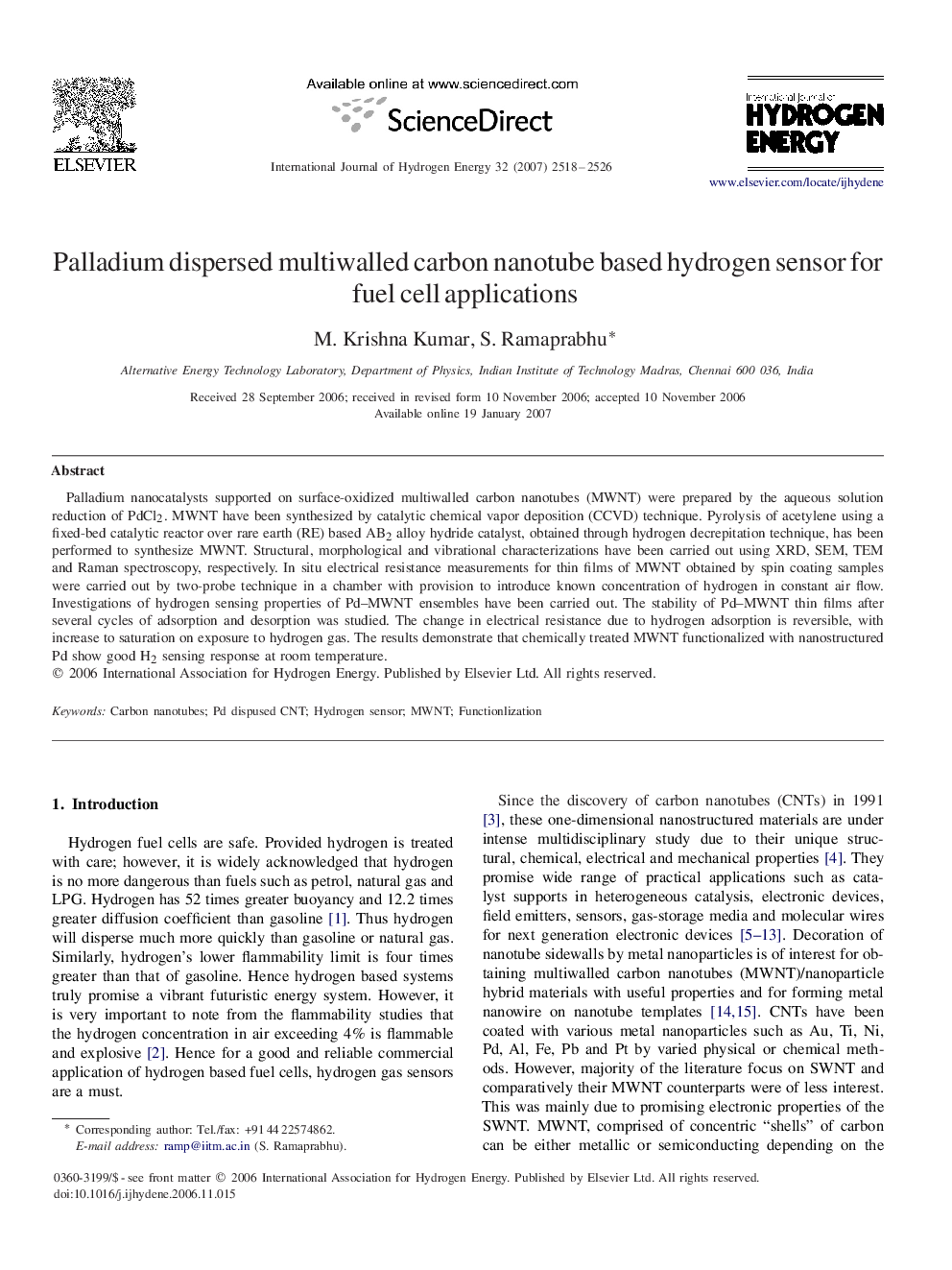| Article ID | Journal | Published Year | Pages | File Type |
|---|---|---|---|---|
| 1280364 | International Journal of Hydrogen Energy | 2007 | 9 Pages |
Palladium nanocatalysts supported on surface-oxidized multiwalled carbon nanotubes (MWNT) were prepared by the aqueous solution reduction of PdCl2PdCl2. MWNT have been synthesized by catalytic chemical vapor deposition (CCVD) technique. Pyrolysis of acetylene using a fixed-bed catalytic reactor over rare earth (RE) based AB2AB2 alloy hydride catalyst, obtained through hydrogen decrepitation technique, has been performed to synthesize MWNT. Structural, morphological and vibrational characterizations have been carried out using XRD, SEM, TEM and Raman spectroscopy, respectively. In situ electrical resistance measurements for thin films of MWNT obtained by spin coating samples were carried out by two-probe technique in a chamber with provision to introduce known concentration of hydrogen in constant air flow. Investigations of hydrogen sensing properties of Pd–MWNT ensembles have been carried out. The stability of Pd–MWNT thin films after several cycles of adsorption and desorption was studied. The change in electrical resistance due to hydrogen adsorption is reversible, with increase to saturation on exposure to hydrogen gas. The results demonstrate that chemically treated MWNT functionalized with nanostructured Pd show good H2H2 sensing response at room temperature.
